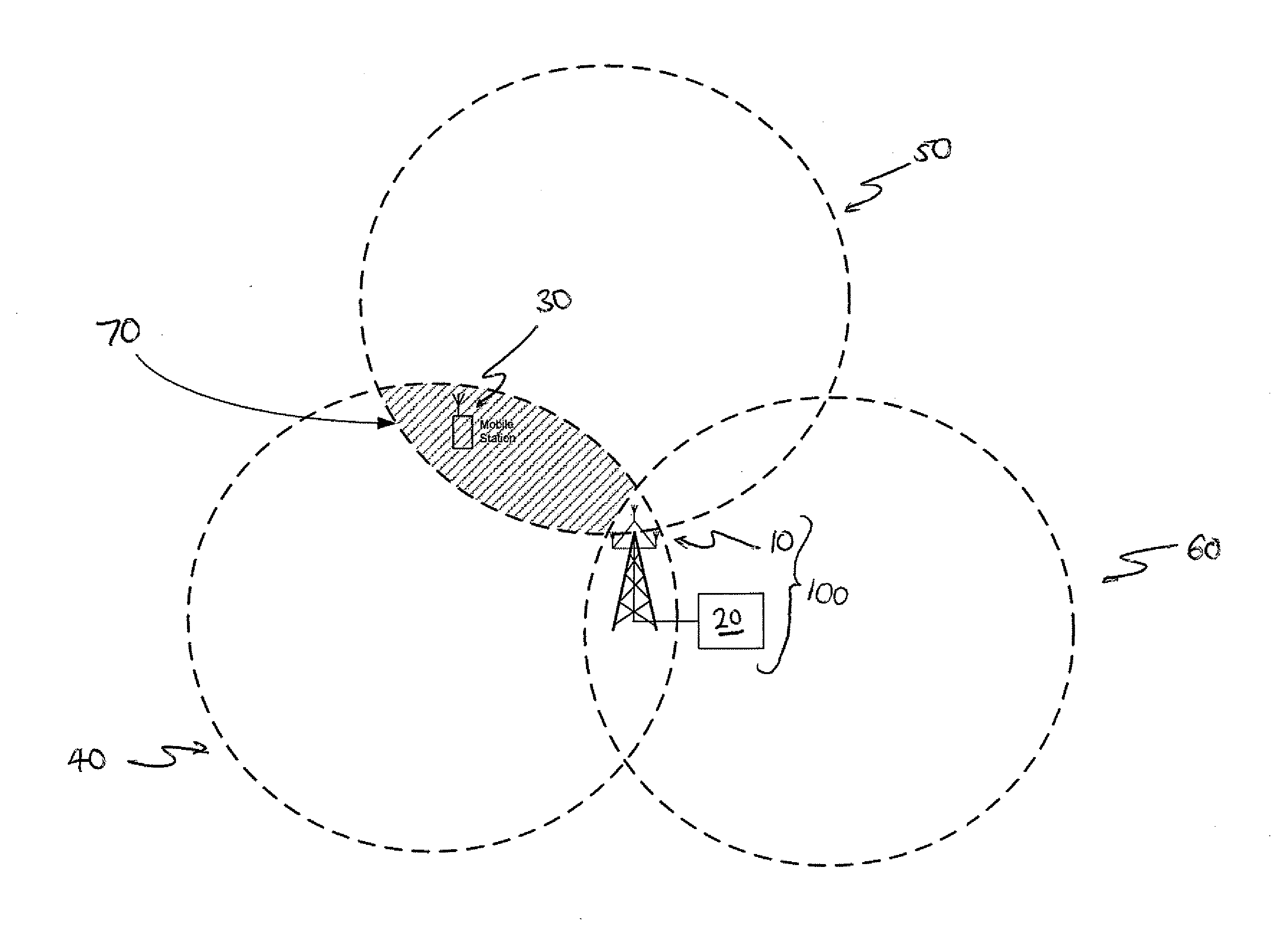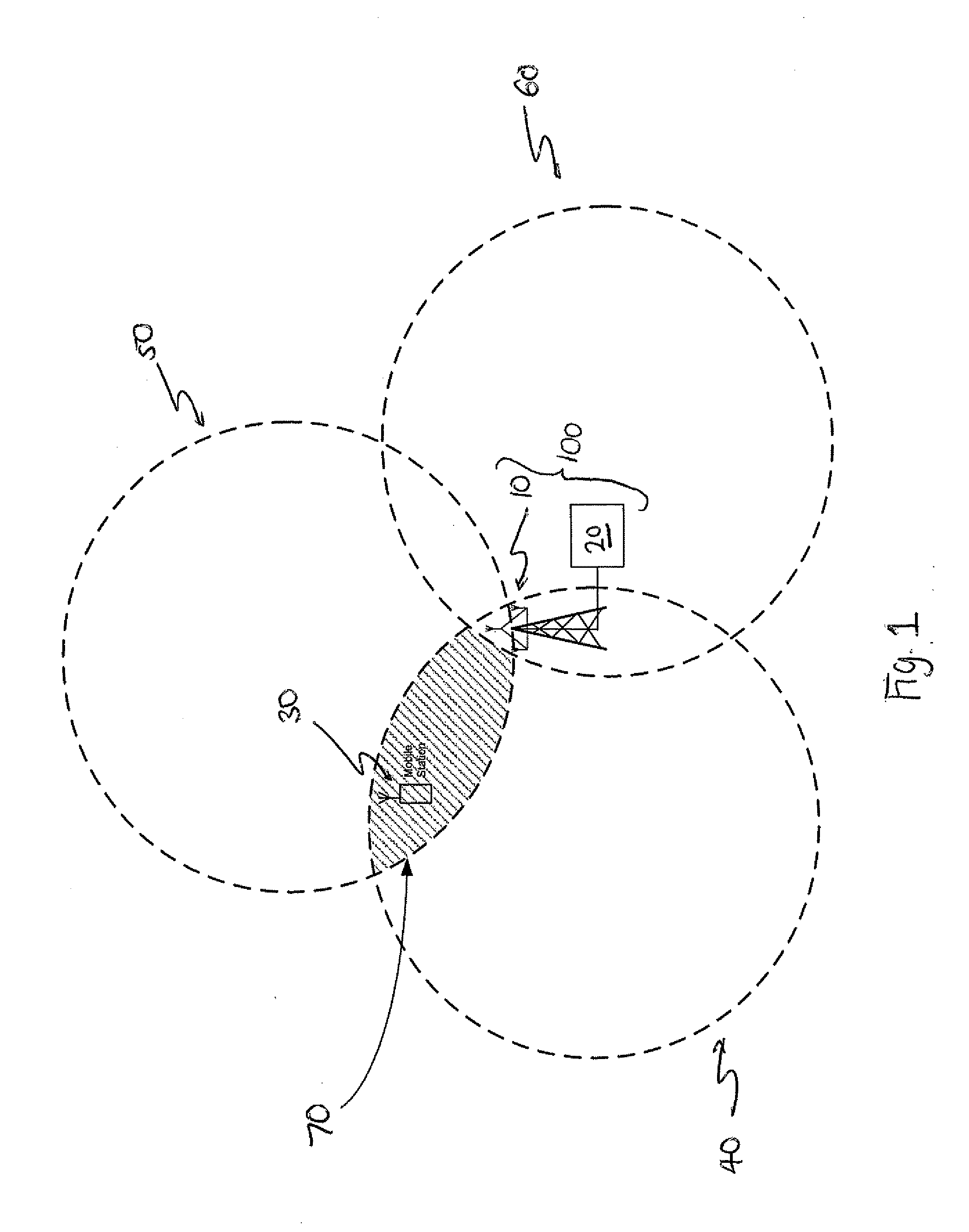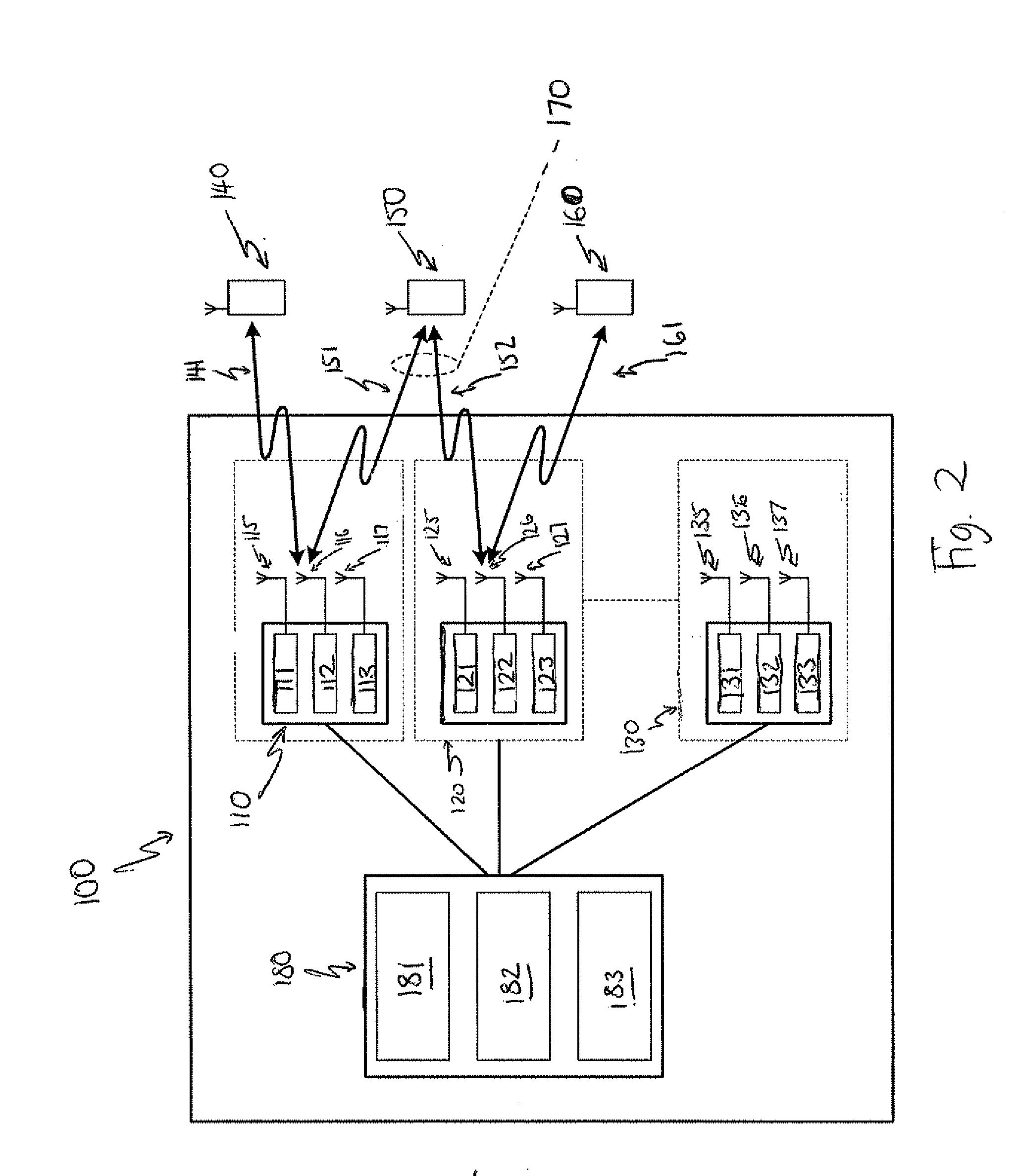Radio Network Control
a radio network and radio technology, applied in the field of radio network operation or control, can solve the problems of relatively processor-intensive process of processing and combining signals from multiple mobile stations over multiple base station radio systems, and achieve the effect of increasing capacity, coverage, throughput and quality of received signals
- Summary
- Abstract
- Description
- Claims
- Application Information
AI Technical Summary
Benefits of technology
Problems solved by technology
Method used
Image
Examples
Embodiment Construction
[0035]For the purposes of this description, the terms mobile station and base station have been used. The term mobile station is equivalent to the term user equipment (UE) employed in 3GPP standards or the term subscriber station. The term base station can be considered equivalent to the term eNodeB or cell used in 3GPP standards, although it is recognised that the eNodeB and cell are separate concepts in the LTE system. It will equally be understood that the invention can be applied to systems other than LTE, for example WiMAX (based on the IEEE 802.16 standard).
[0036]Referring first to FIG. 1, there is shown an illustration of a radio network in accordance with the present invention. The radio network comprises a base station 100 and a mobile station 30. The base station 100 comprises an antenna unit 10 and RF and control systems 20.
[0037]The base station 100 provides coverage to three separate sectors, each sector being covered by a respective antenna system from the antenna unit...
PUM
 Login to View More
Login to View More Abstract
Description
Claims
Application Information
 Login to View More
Login to View More - R&D
- Intellectual Property
- Life Sciences
- Materials
- Tech Scout
- Unparalleled Data Quality
- Higher Quality Content
- 60% Fewer Hallucinations
Browse by: Latest US Patents, China's latest patents, Technical Efficacy Thesaurus, Application Domain, Technology Topic, Popular Technical Reports.
© 2025 PatSnap. All rights reserved.Legal|Privacy policy|Modern Slavery Act Transparency Statement|Sitemap|About US| Contact US: help@patsnap.com



